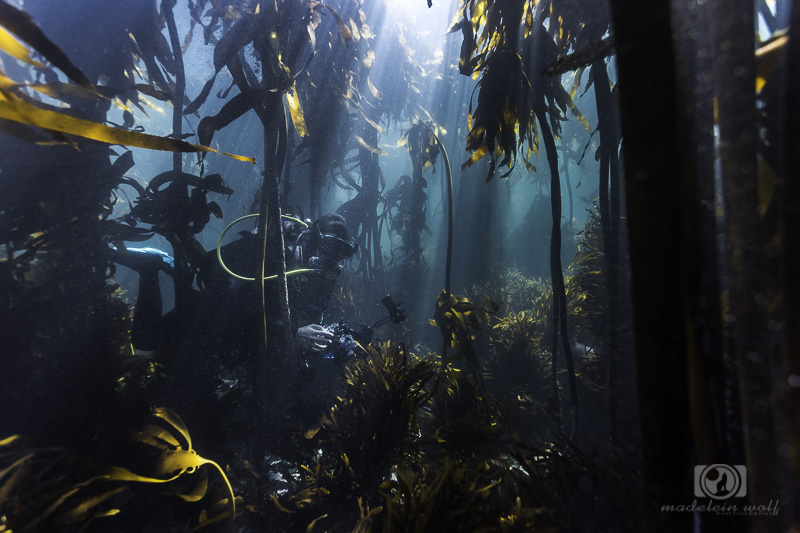Dive Travel — South Africa
One of the world’s largest kelp forests is in South Africa. Kelp is a marine alga and not a true plant, with species ranging from shorter “bottom kelp” to taller ones. This ecosystem serves as food and shelter for many marine species and is one of the richest habitats on earth.
From the shore on the water’s surface, the forest canopy is visible and looks like a shiny green mass. But below the surface, an enchanting new world opens up.
A Kelp forest above the water looks like a tangle of shiny green leaves
When I first entered kelp forests as a snorkeler and then an Open Water scuba diver, the kelp felt like a scary, dark place that would entangle me. But if you stay calm and move with the back-and-forth sway of the surge, it opens up and becomes a serene place. The slippery leaves flow over your body with the movement of the water. If you slow your breathing and listen, you can hear the crackling of the kelp, and when you look up, you see a mesmerizing scene of sun rays trickling down through the tall fronds. This is a new world to explore and get lost in.
The importance of kelp forests
Diverse Ecosystems
These ecosystems are some of the world’s most diverse and are rich in marine life and biodiversity, containing about 14,000 species. They function as nurseries for various fish species and provide shelter for animals from predators and storms. They house various fish, marine animals, invertebrates, urchins, rock lobsters, sea otters, and Cape Fur Seals. They purify the water since kelp thrives on the waste products produced by its inhabitants.

A cuttlefish hiding in the kelp forest
Reduces Carbon
These forests are crucial for ocean health. Kelp can grow one to two feet a day, absorbing huge amounts of carbon through photosynthesis. Kelp forests are vital in reducing emissions, capturing, and sequestering carbon faster than land forests. Restoring and enhancing kelp and seagrass beds to store more “blue carbon” is seen as a crucial tool to counter the effects of a warming ocean and world.
Wide Uses
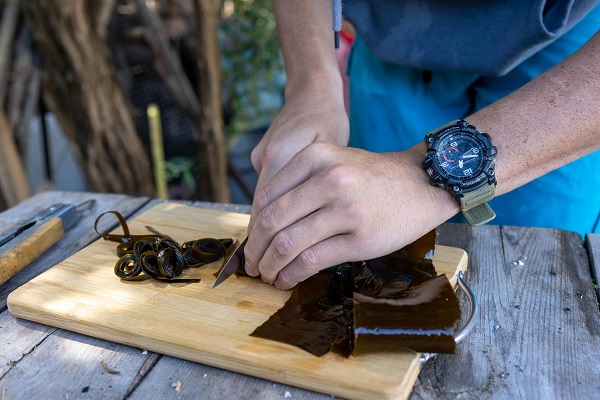 |
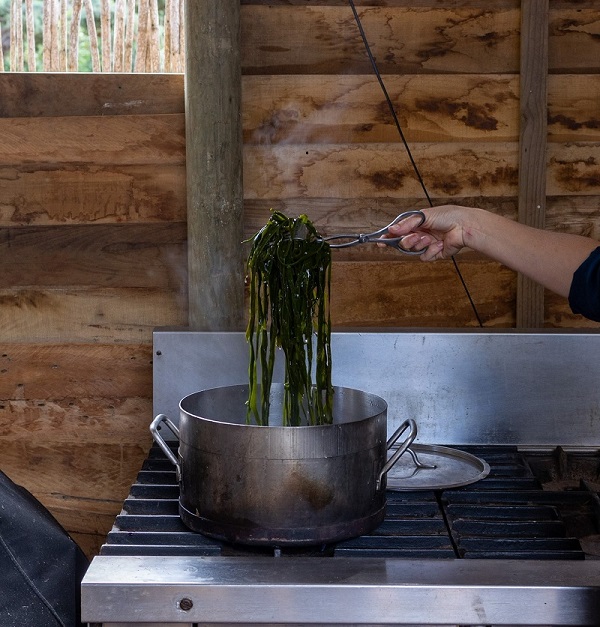 |
Kelp is cut into thin slices and cooked as a pasta substitute
Kelp has many uses. Seaweed and kelp have health benefits and are consumed raw or cooked in sushi, sauces, and salads. I tried it as a pasta substitute, and it tasted great. Kelp may aid digestion, promote healthy nails and blood vessels, and help with diabetes and weight management, but these benefits aren’t proven yet.
Different species of edible seaweeds are found on the South African coast
More pre-packaged seaweed and kelp products are in stores now. It’s also in pharmaceuticals, toothpaste, shampoos, and puddings. It’s widely used to stabilize and improve food texture.
The hollow float of kelp can be used to cook food on a fire
Kelp reduces coastal erosion by buffering storm-driven waves and surges. Shallow beds protect the shoreline by keeping sediment in place.
Distribution and recent spread
The underwater forest in South Africa extends for about 1,000km parallel to the shoreline from the west to the southern coast at De Hoop Nature Reserve, and about 100m offshore.
The main algal species in South Africa are Ecklonia maxima and Laminaria pallida.
Laminaria pallida prefers rocky shores for attachment. Their height protects creatures from the open ocean. Invertebrates live among the algae. Sea snails and other invertebrates feed on the blades. Sea urchins feed on the holdfasts, which can kill the algae.

Laminaria pallida
Ecklonia maxima is a dominant west coast species that forms extensive kelp beds from north of Lüderitz, Namibia, to Papenkuilsfontein about 10 km west of Cape Agulhas. It has recently been recorded from Koppie Alleen, De Hoop, indicating a recent range extension of 70 km.
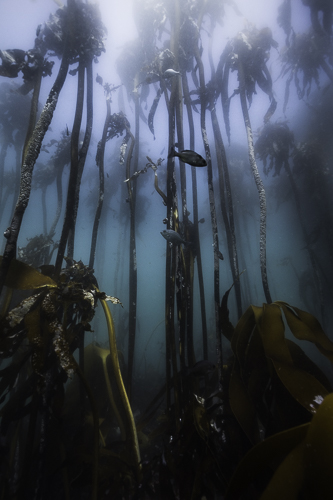
Kelp Forest with tall kelp stems of the Ecklonia maxima
Kelp anchors itself to a rock or other kelp. The hollow stipe and gas-filled float enable it to float near the water's surface, enabling it to soak up more sunlight.
In summer, the southeasterly wind feeds the Cape Peninsula by bringing upwellings of nutrient-rich waters from the ocean’s depths, fertilizing the kelp, and allowing them to grow into giant forests. Wave action and water movement are also vital for growth because they stir up the nutrients and enable the plants to absorb them through their fronds.
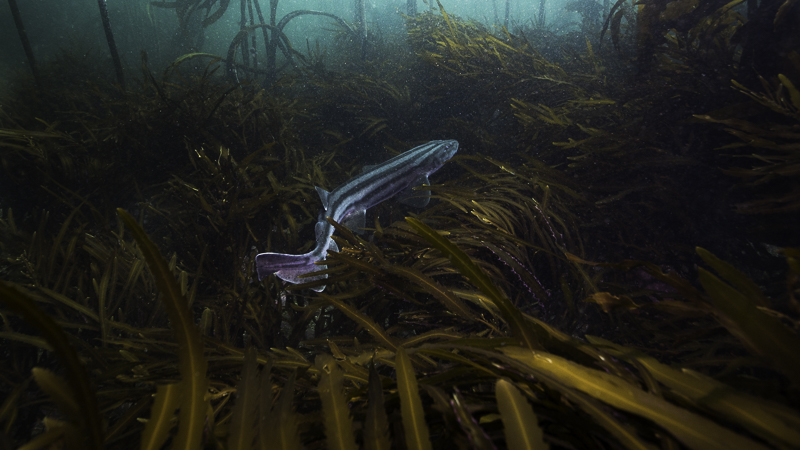
A Pyjama shark or Striped catshark swimming over the lower bottom growing algae
Enjoy and Preserve
The Kelp Forest dots the Cape Peninsula and False Bay shoreline. The easiest way to explore the kelp is with shore entries. There are also deeper sites accessible by boat, which are worth seeing. Diving in the forest when visiting Cape Town is a must.
Kelp forests are wonderful to explore, and I encourage anyone to dive into these mystical forests. Take people with you to appreciate and fall in love with the tranquility these places offer.
We Protect what we Love. Join the movement!

by Madelein Wolfaardt
